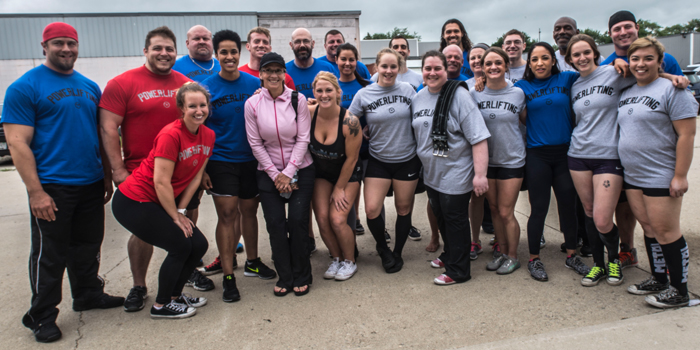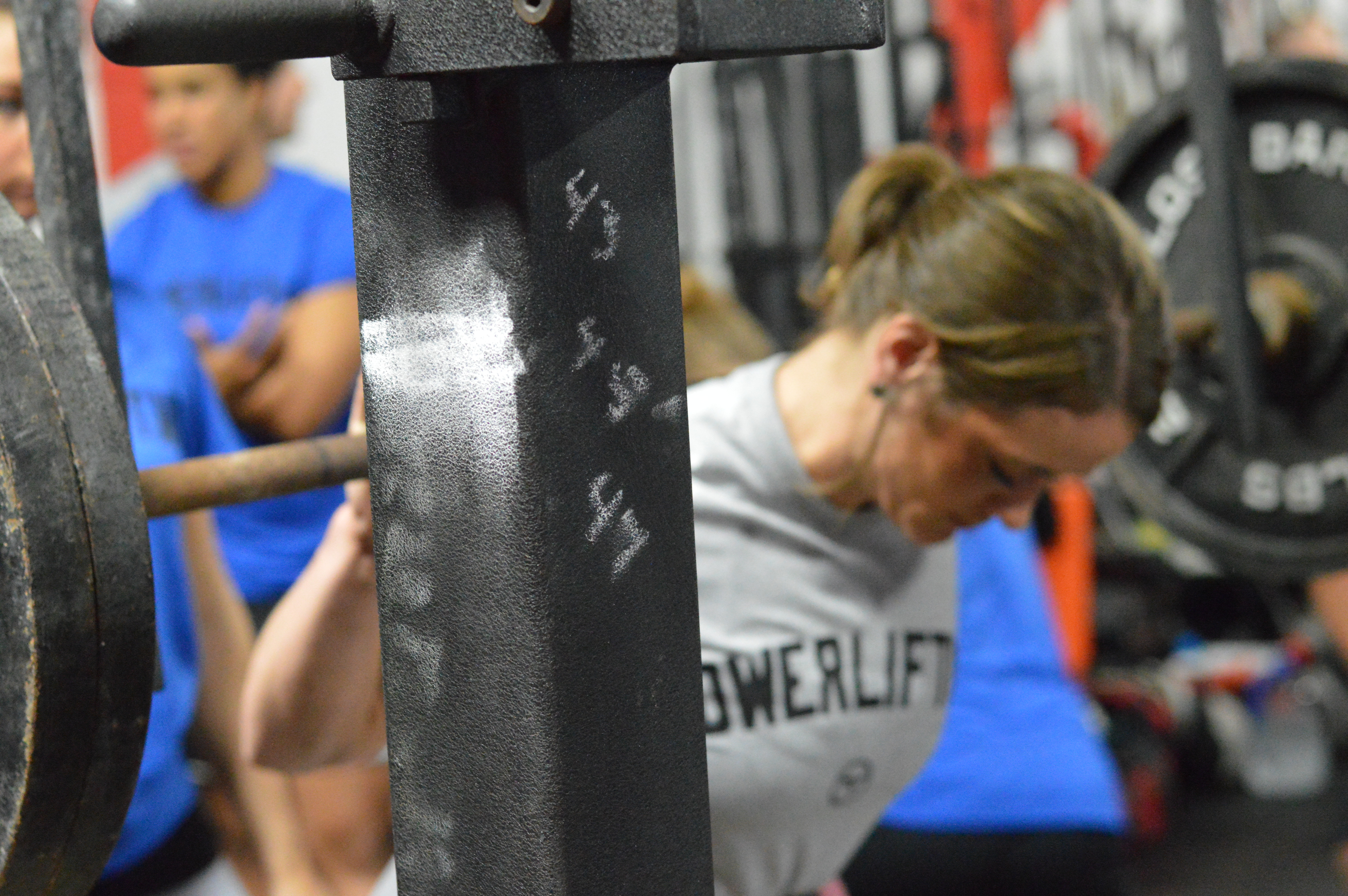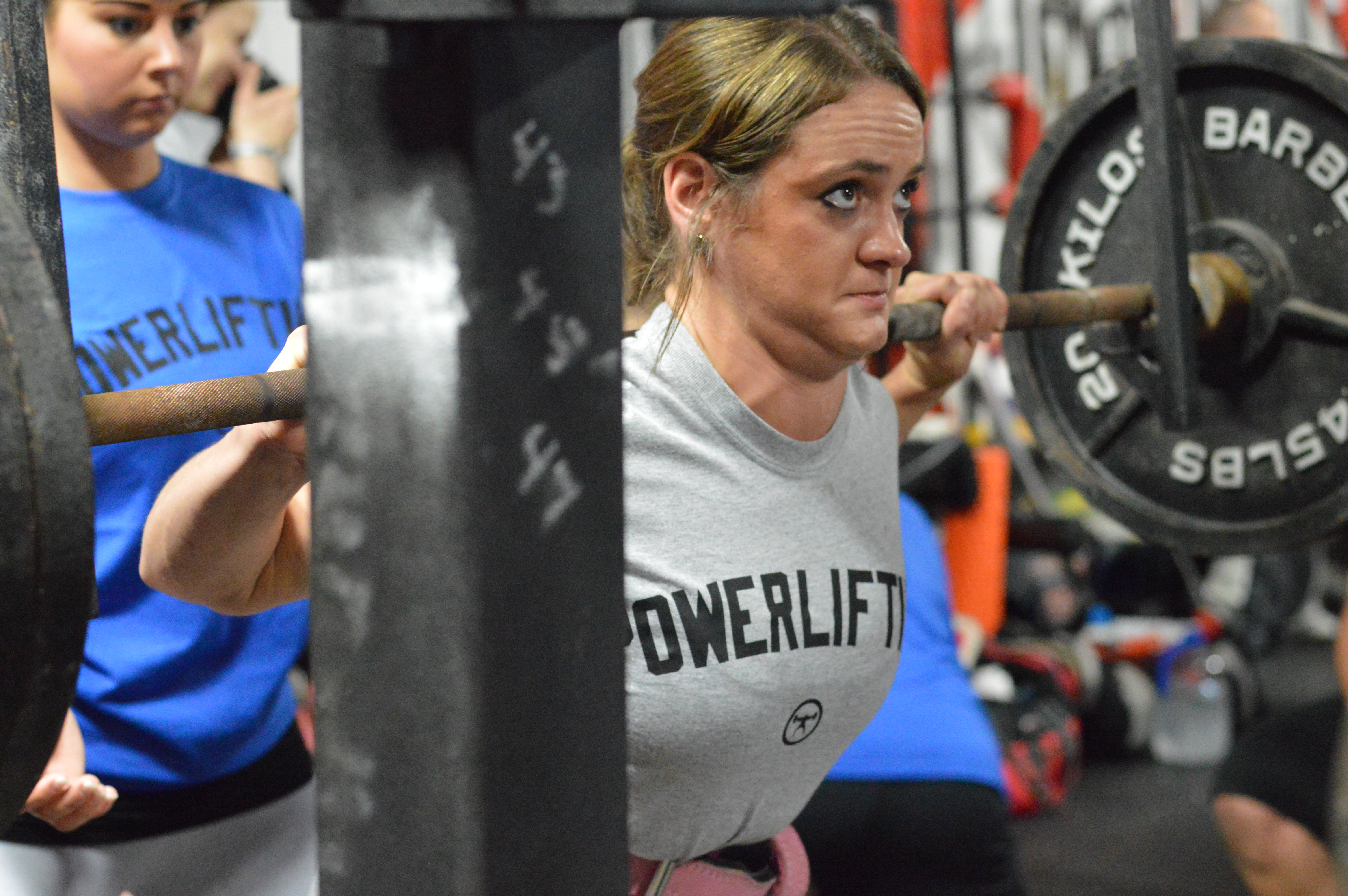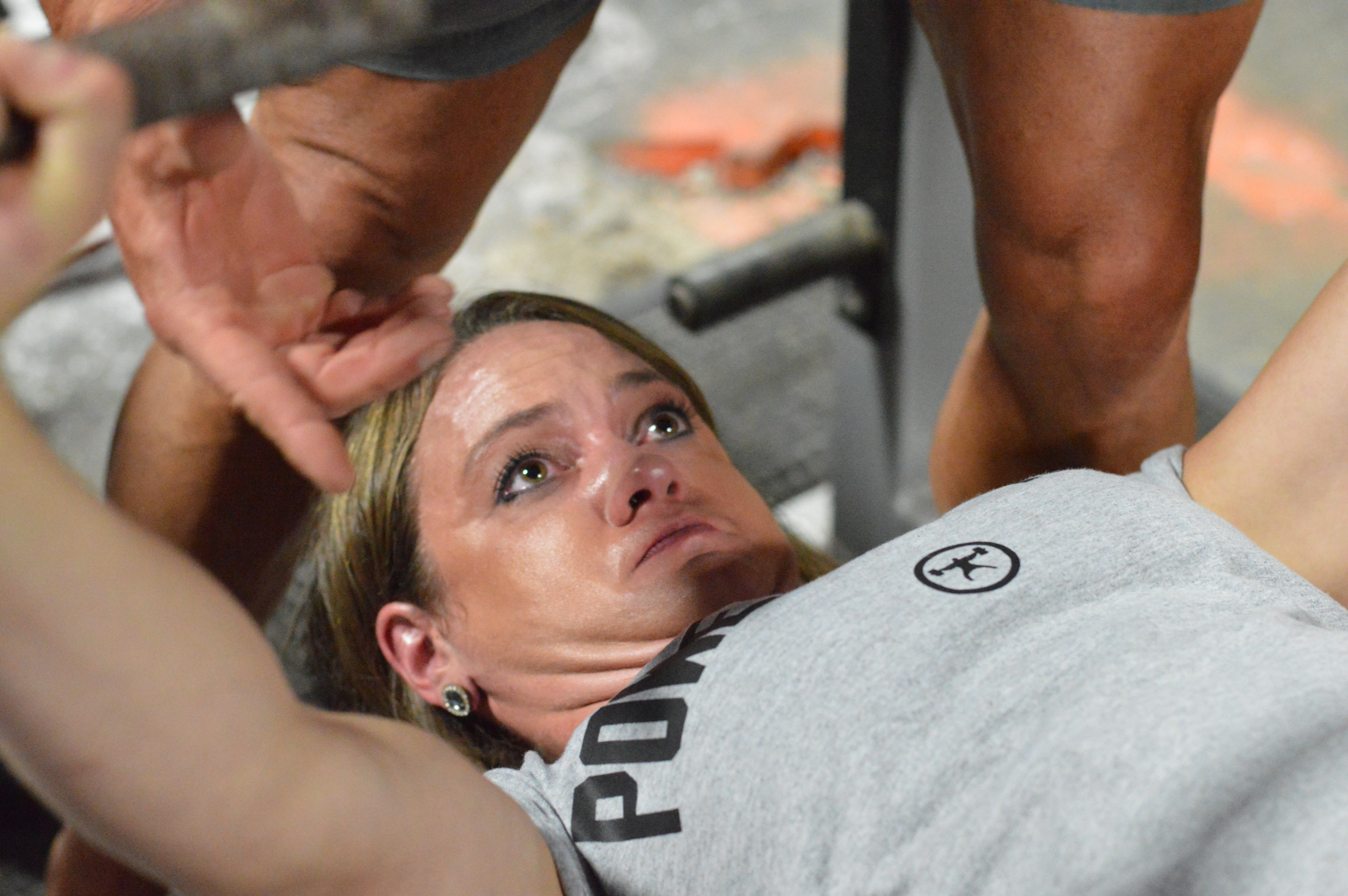
There’s a little bit of magic that you feel as soon as you walk into the elitefs compound. It’s a little overwhelming and in some ways feels like blinders you didn’t even realize you were wearing are removed. It left me trying to quilt together my own experiences with what I was seeing in front of me; there’s no other way to say it other than I walked into the compound and felt like I seriously needed to reflect and question whether I was growing to my personal and athletic best. The confluence of humility, hunger, and community investment challenged me internally with a desire to be like that.
Attending The elitefts Powerlifting Experience II was one of the best weekends I’ve had in an incredibly long time, for a number of reasons. I love to train (don’t we all?), and it permitted me an opportunity to compete in a sport that I love in a dream environment with incredible people. I was given technical cues to improve my own lifting from people I respect so much that they have great influence over the internet. Here, I had the opportunity to train with them in person, along with my coach and mentor Steve Trippe. At this experience, the level of attention and investment I got from the coaches and elitefts athletes made me feel like I was part of team elitefts for the day. I can’t tell you any more about what that’s like other than “incredible.”
The weekend started with check-in Friday night, where we were assigned to groups that would be our mock-meet training group Saturday. I was in a small group with nine other lifters, coaches Matt Ladewski, Bob Youngs, and Harry Selkow, and elitefts athletes Mickey Belaineh, Yessica Martinez, Alycia Israel, Casey Williams, and Alex Cortes. I can’t think of any other opportunity like this where that coach to athlete ratio is offered, especially not from the caliber of coaches at elitefts.
We had a short meet-and-greet that night, where we were given time to each ask any questions we wanted. How often do you get the opportunity to sit with the best of the best and have them ask you “hey, what do you feel you need to know?” My particular group focused on meet-related environmental factors, such as nutrition for meet day, timing, gear, general meet flow, sleep, and how to mentally prepare. I met Casey briefly at RUM8 earlier this year, and noted how particularly calm he was while competing at a prestigious event. My mental clarity is something I intentionally need to improve, so hearing his routines, internal cues, and how he goes about meet day was informative, challenging, and so much along the lines of what I needed to hear to get better at managing external factors on meet day.
When we arrived to lift Saturday, my coach Steve made the reality of the day sink in a little further when he point blank told me, “You’re not my athlete today—you’re theirs.” The respect I have for Steve is unparalleled; when someone you look up to so much tells you to listen and do what you’re told, you do it.
I was nervous about squatting heavy, as I’ve been working through an injury and have done more corrective work than squatting recently. Naively, I didn’t tell any of the elitefts coaches that I’d been dealing with an injury. They immediately caught that I was unable to load into one of my hips and couldn’t implement the cues they gave. Initially, I was a little discouraged, feeling like somehow I’d let the coaches down. By trade, I am a physical therapist, so I tend to be a little harder on myself when it comes to rehabilitation. Bob Youngs pulled me aside at one moment and reminded me that sometimes the best mechanics have the most broken cars in their driveways, and Harry Selkow reminded me never to trust the barber who cuts his own hair.
Silly things, but these coaches understood where I was at mentally as an athlete, met me there, and pulled me to a better place, which was a huge learning point and so clearly emphasizes the “live, learn, pass on” motto.
Matt provided a different cue to implement on my next set that unloaded the injury and helped me stay tighter in my upper back. I didn’t hit a squat PR, but it was the first time at 93% of competition max in months that I didn’t hurt. This was the first time in a very long time things finally felt “right” again with my squat, largely due to the mental and technical coaching. After hitting my last squat, Alexander Cortes and I discussed movement patterns and rehabilitation to maintain and supplement the cues that Matt gave me. We had more than one lifter in the group hit not one but two squat PR’s — one based on a different technique for wrapping her knees, another by cues for keeping upper back tightness. While PR’s are one of the things we chase, my favorite part of this session was seeing each member of the group, participant and coach alike, contribute something to making everyone else better.
RELATED The elitefts Powerlifting Experience II: Squats and Morning Progress
After squatting, we took a short break before moving to bench warm-ups. Even as we were warming up with the bar, feedback was intentional. These weren’t just warm-ups. It was the first time I’ve had my form with the bar critiqued and changed, and it influenced the rest of my warmups, which likely primed me to move and coordinate well on the heavy sets. My hip pain had been hindering my ability to generate any leg drive.
Harry, Bob, Casey, and Alex all worked with the changes I’d already been making, sticking with what worked, and tweaked them to further improve my leg drive. Casey adjusted my foot placement, and Alexander cued me into different upper back support that kept me tighter on the unrack and eccentric. Harry’s cues for eye focus and bar path got me into routine to approach each lift systematically, which helped me keep my setup more effectively as well. Having benched heavy not even 48 hours prior, I was still able to hit my training max smoothly, and got a fist bump from the one and only Harry Selkow.
I jokingly own the round back deadlift as being part of the “angry cat crew.” While I’ve tried most the generic cues that “should” help me lock in my lats and get in position a little better, nothing’s really clicked. Casey gave me advice to be more patient with the bar, which changed the way I build tension and where I drive through. Matt and Bob both gave me similar cues with weight distribution on my feet that got my hips in a better position for glute engagement on my lockout. It was my third time pulling heavy in one week (which I’ve never done before) and I was still hit a training PR of 385 after pulling 375 pounds three days before.
It wasn’t perfect—there were a lot of things that needed to change, but the immediate response of “well done” was shortly followed by a question of “what do you need to do differently to make that even better?” Always look forward with a purpose, and be intentionally evaluative was my takeaway from this portion.
Once every group had finished their mock meet, the entire group of coaches and athletes regrouped. Dave kept track, and a total of 164 PR’s had been set in the course of a few hours. That is an absurd number for a meet that people intentionally peak for, let alone an event that most of us came into having trained all week.
As we listened to Dave, he brought up a good point: for all the PR’s hit, no one had really gotten “stronger” that day. All we’d done was influence technique. I don’t think it had really hit me until then, for some reason. In a state of complete fatigue, having pulled heavy multiple times, last lift of the day, a few changes in cues brought me to a 3x bodyweight training PR in my favorite lift.
During the presentations, Dave, Steve Goggins, and Vincent Dizenzo spoke about the overall themes that emerged based on technical cues they’d given that day and on feedback from what other coaches saw, which provided us as lifters an opportunity to learn for ourselves, but also provided knowledge that our training partners at home may benefit from.
The official seminar ended with Clint Darden speaking. There really aren’t words to describe the influence that Clint has had on this community, and hearing him speak is one of those experiences that changes the way you see just about everything. The way he cares for his clients, his family, and his community has been a driving force in what shapes the people I respect the most. I could go on and on about hearing Clint speak, let alone the conversations I had with Harry Selkow afterwards, but that deserves an article in and of itself. These are two absolutely incredible men who speak so well to the fire inside every athlete.
Always be learning; approach with intent.
Once seminar wrapped up, Dave approached Steve and I to talk about rehab. Take that in for a second — after spending the day making sure everyone else at the compound had a phenomenal experience, Dave Tate sought us out. Steve and I both have backgrounds in biomechanics, and while we have different educational experiences, we see eye-to-eye on movement patterns, the importance of joint health, mobility, tendon strength, and soft tissue integrity, especially for strength athletes.
We discussed different elements of both healing and biomechancis to keep in mind and how to go about addressing each of them (which I expect an update on weekly, by the way, Dave). Being quite frank, I couldn’t believe that Dave Tate cared at all what I had to say about his mobility, being newer to the industry.
RELATED The elitefts Powerlifting Experience II: With Great Risk Comes Great Reward
It takes courage to lift under the scrutiny of the world's greatest lifters. On one particular weekend, this courage produced 164 PRs.
Then I remembered — this is the very man who founded the brand that specifically states the value of a spirit of learning. Why in the world should I be surprised that he himself would live in a way that demonstrates commitment to that very principle? His character and vision is the well from which the brand’s culture, internal and external, is drawn from.
Through the conversation, we developed an approach to several physical issues he has been having. We gave him recommendations on multiple topics:
Range of Motion
Near end range of motion isometrics for 30+ seconds will be helpful. Any movement you are doing can be applied at a moderate weight, and this will aid in keeping you mobile in your current range of motion, and may even open you up further without adding extra stress. I can go into detail as to why this is my recommendation if you want. This can be done right at the end of any exercise, DC Style, but NOT to the end of your range of motion.
Tendon Strength
Overloaded eccentrics are on the bill. Keep it to isolation-ish movement, reps over six. There is a lot of research showing the effectiveness of this method and, more importantly, it's something I've used with a lot of competitors coming back from injuries. When I say overloaded I do not mean >1RM, but rather something like two up, one down, or partner-assisted concentrics.
Again, there will be overlap in the results, but it's basically one method per variable. You'll get to see what works and what doesn't. We hope that everything works, but learning what does and what doesn't is the long-term goal.
As Dave, Steve, and I wrapped up our discussion at the end of the night, it seemed appropriate that the conversation come full circle to the values of elitefts that had been so tangible all weekend. I came into this weekend with exceptionally high expectations, because my experiences with anything related to the brand had been nothing but positive.
If you ever have an opportunity to attend something like this, I strongly urge you to go. You will likely walk out of the room a better lifter from a technical standpoint, but beyond that, you will be changed for the better in the way you think about what’s happening around you. You will experience first-hand what it looks like to be immersed in a community that truly does live, learn, and pass on, and you will be inspired to do the same.
Dani is a recent DPT (Doctor of Physical Therapy) graduate from Duke University, certified strength and conditioning specialist, and raw powerlifter with best meet lifts of 308/155/402, totaling 865 without wraps in the 123 class at RUM8. Although fairly new to the sport, Dani has jumped in feet first by utilizing her background knowledge of biomechanics and rehabilitation in both her own lifting and the athletes she coaches. Her initiative to learn has driven her to seek out coaches, mentors, and clinical specialists to absorb as much knowledge as she can in a deep desire to empower and inspire athletes. More than anything, she hopes to use her knowledge to make it rain a little bit of glitter and seeks to be a part of helping people be at their best, while chasing a 1000-pound total at 123.












